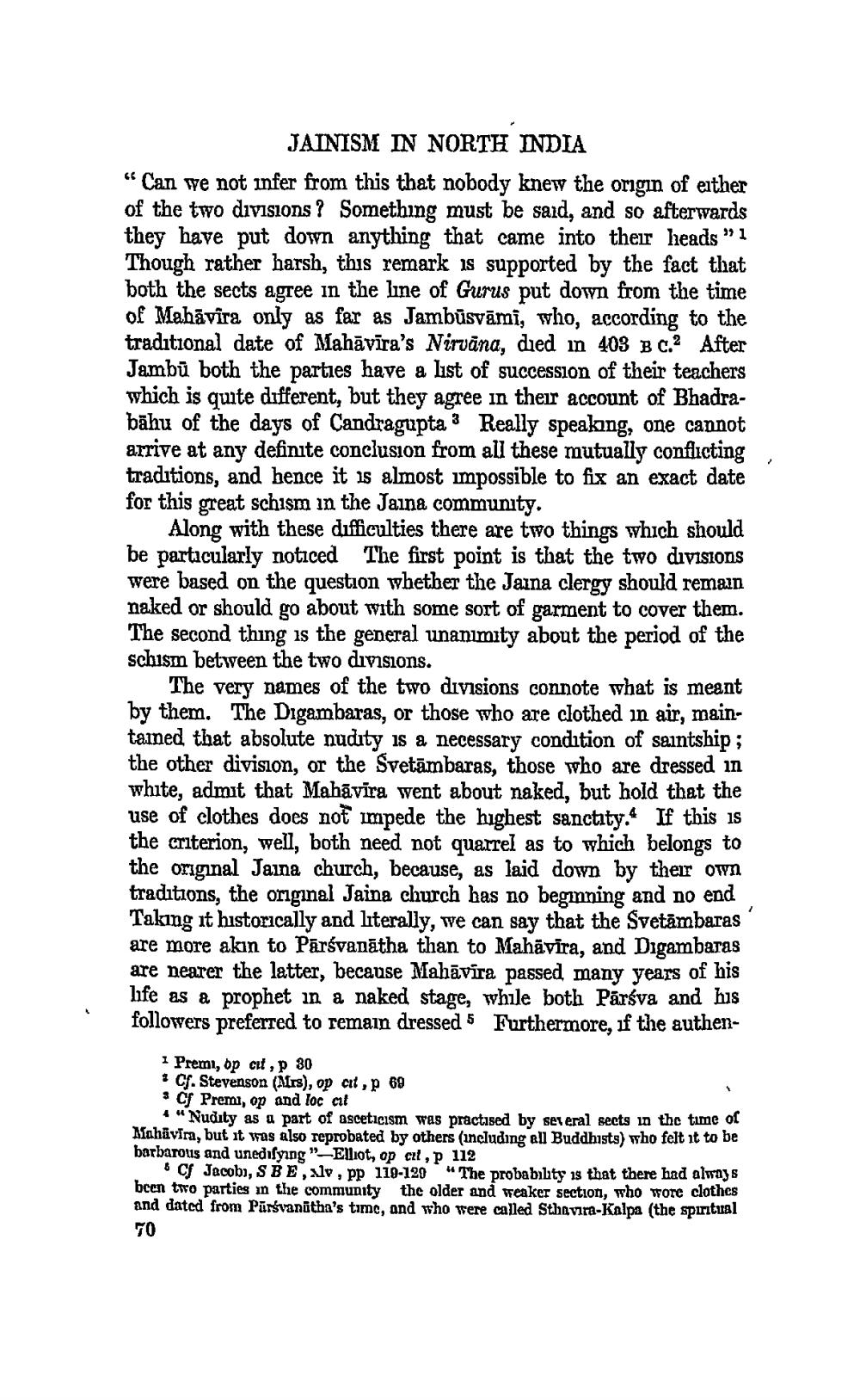________________ JAINISM IN NORTH INDIA "Can we not infer from this that nobody knew the origin of either of the two divisions? Something must be said, and so afterwards they have put down anything that came into their heads" 1 Though rather harsh, this remark is supported by the fact that both the sects agree in the line of Gurus put down from the time of Mahavira only as far as Jambusvami, who, according to the traditional date of Mahavira's Nirvana, died in 403 B C. After Jambu both the parties have a list of succession of their teachers which is quite different, but they agree in their account of Bhadrabahu of the days of Candragupta 3 Really speaking, one cannot arrive at any definite conclusion from all these mutually conflicting traditions, and hence it is almost impossible to fix an exact date for this great schism in the Jaine community. Along with these difficulties there are two things which should be particularly noticed The first point is that the two divisions were based on the question whether the Jaina clergy should remain naked or should go about with some sort of garment to cover them. The second thing is the general unanimity about the period of the schism between the two divisions. The very names of the two divisions connote what is meant by them. The Digambaras, or those who are clothed in air, maintamed that absolute nudity is a necessary condition of saintship; the other division, or the Svetambaras, those who are dressed in white, admit that Mahavira went about naked, but hold that the use of clothes does not impede the highest sanctity. If this is the criterion, well, both need not quarrel as to which belongs to the original Jaina church, because, as laid down by therr own traditions, the original Jaina church has no beginning and no end Taking it historically and literally, we can say that the Svetambaras are more akin to Parsvanatha than to Mahavira, and Digambaras are nearer the latter, because Mahavira passed many years of his life as a prophet in a naked stage, while both Parsva and his followers preferred to remain dressed 5 Furthermore, if the authen 1 Premi, op cit, p 80 Cf. Stevenson (Mrs), op art, p 69 * CJ Premi, op and loc al "Nudity as a part of asceticism was practised by several sects in the time of Mahavira, but it was also reprobated by others (including all Buddhists) who felt it to be barbarous and unedifying "-Elot, op el, p 112 SCS Jacobi, SBE, lv, pp 110-120 "The probability is that there had always been two parties in the community the older and weaker section, who wore clothes and dated from Parsvanitha's time, and who were called Sthavira-Kalpa (the spiritual 70




